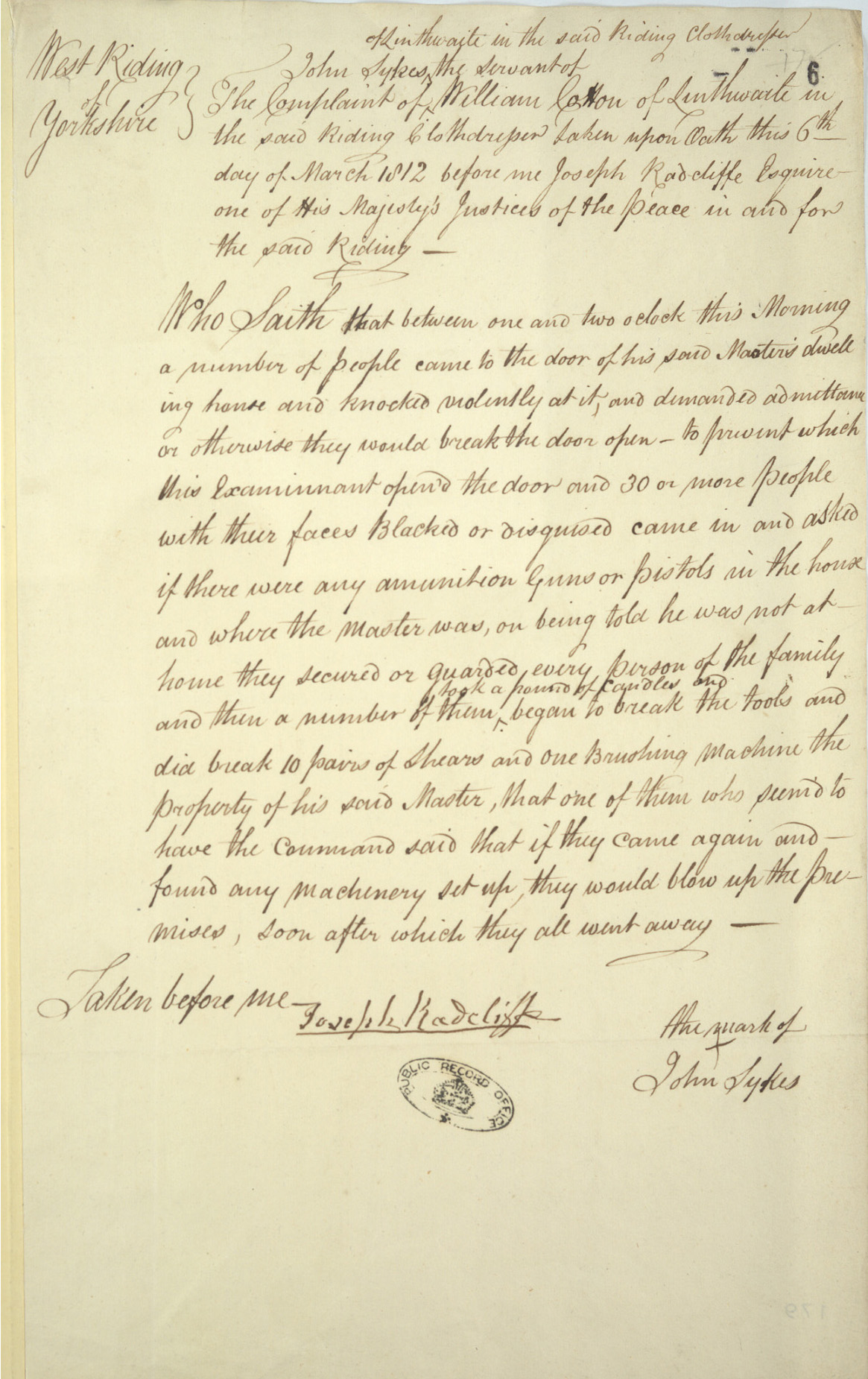
An account of machine-breaking at Linthwaite, Yorkshire, March, 1812. Catalogue ref: HO 40/1/1, part 2, f.6
This is evidence given by a servant called John Sykes to the local Justice of the Peace.
Cloth draper: weaver of cloth.
Cloth dresser: person employed in finishing cloth for the market, as napping, shearing, brushing, or pressing.
Shears: tool for cutting like large scissors
Brushing machine: used to remove loose fibres from textiles for better finish
Transcript
West Riding of Yorkshire
The complaint of John Sykes of Linthwaite in the said Riding clothdraper, the servant of William Cotton of Linthwaite in the said Riding clothdresser taken upon oath this 6th day of March 1812 before me Joseph Radcliffe Esquire one of His Majesty’s Justices of the Peace in and for the said Riding –
Who saith [said] that between one and two o clock this Morning a number of people came to the door of his said Master’s dwelling house and knocked violently at it, and demanded admittance or otherwise they would break the door open – to prevent which this Examinnant [witness] opened the door and 30 or more people with their faces blacked or disguised came in and asked
If there were any amunition [ammunition] guns or pistols in the house and where the Master was, on being told he was not at home they secured or guarded every person of the family and then a number of them took a pound of candles and began to break the tools and did break 10 pairs of shears and one brushing machine the property of his said Master, that one of them who seemed to have the command said that if they came again and found any machinery set up, they would blow up the premises, soon after which they all went away –
Taken [sworn on oath] before me – Joseph Radcliffe
The mark of John Sykes
- What type of source is this?
- What is the tone of the document?
- What happened according to John Sykes?
- How do you think John Sykes felt about these events?
- Why do you think the intruders destroyed the machinery?
- Was this an act of vandalism or of self-defence?
- What insight does the document give about manufacture at that time?
- Why does the letter say ‘the mark of John Sykes’?
- What other sources might explain the actions of those who broke machinery?
